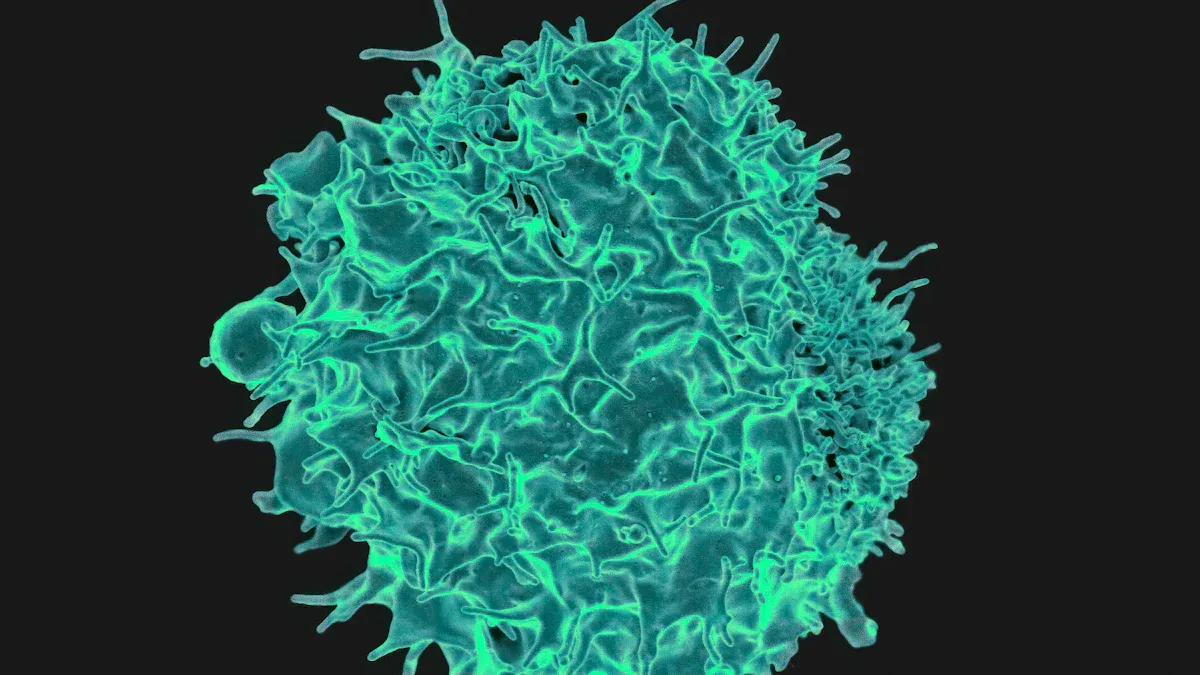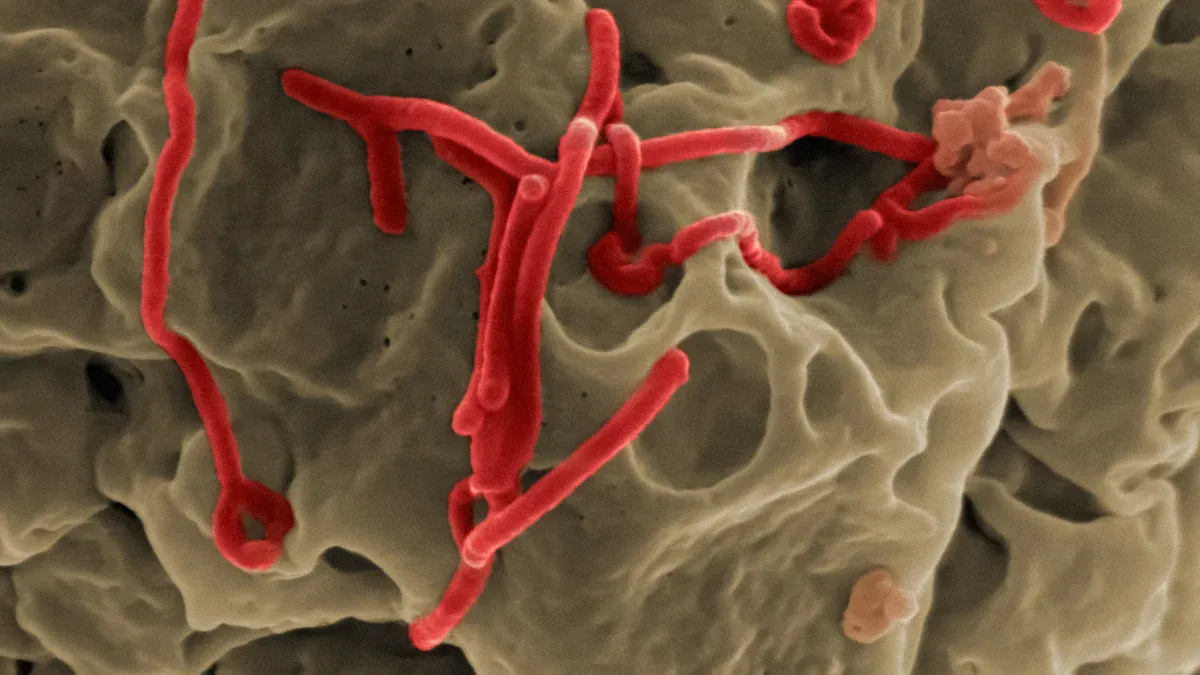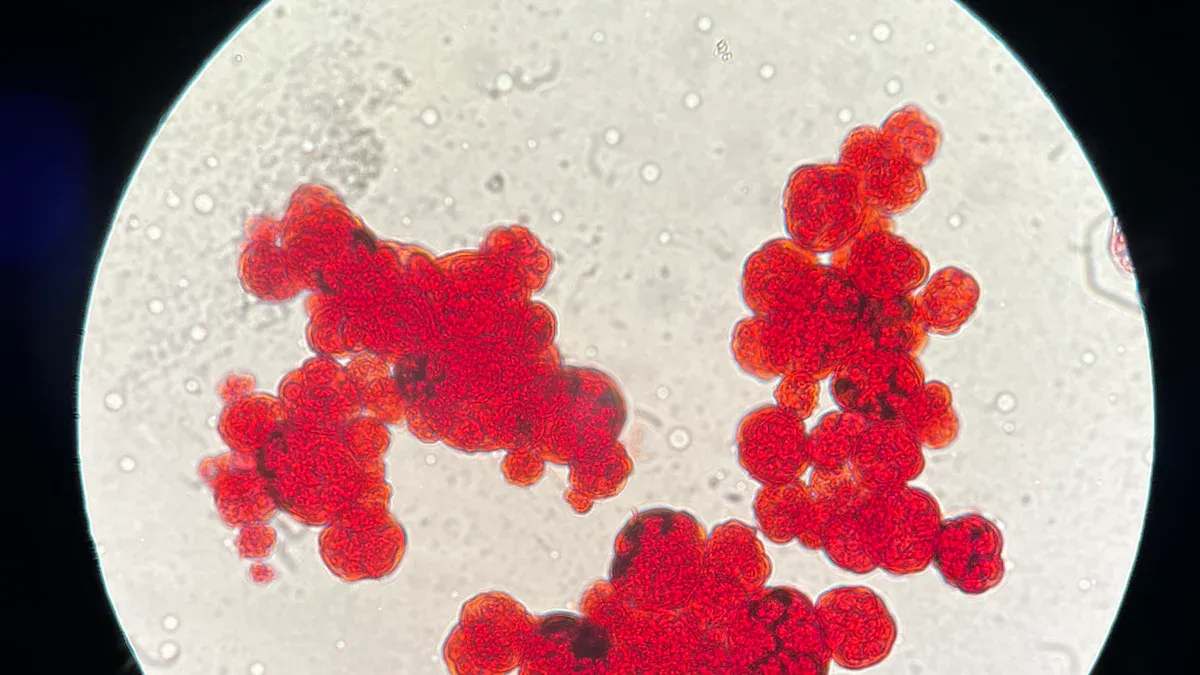Hepatosplenic T-cell lymphoma explained simply

Hepatosplenic T-cell lymphoma is a rare and aggressive cancer that primarily affects your liver, spleen, and bone marrow. It accounts for only 1–2% of all peripheral T-cell lymphoma cases globally, with prevalence varying by region. For example:
Asia: 0.2%
Europe: 2.3%
Americas: 3%
This cancer originates from cytotoxic T cells, often of the γδ TCR type. Its aggressive nature stems from how it infiltrates vital organs like the liver and spleen in a sinusoidal pattern. This rapid progression leads to a poor prognosis and makes early detection crucial.
Key Takeaways
Hepatosplenic T-cell lymphoma is a rare, fast-growing cancer. It mainly affects the liver, spleen, and bone marrow. Finding it early can lead to better treatment results.
Common signs are feeling very tired, losing weight without trying, fever, and sweating at night. See a doctor if you notice these symptoms.
Risks include being a young adult male, using immune-suppressing medicine for a long time, or having inflammatory bowel disease. Knowing these risks can help find the disease sooner.
Doctors use blood tests, scans, and a bone marrow test to diagnose it. Correct diagnosis is key to planning the right treatment.
Treatments include chemotherapy and stem cell transplants. Joining clinical trials may offer new treatments and improve chances of survival.
Characteristics of Hepatosplenic T-cell lymphoma
Rarity and affected population
Prevalence and rarity of HSTCL
Hepatosplenic T-cell lymphoma is an extremely rare form of cancer. It accounts for only 1–2% of all peripheral T-cell lymphoma cases worldwide. This rarity makes it challenging to diagnose and study. The disease is classified as a subtype of extranodal lymphoma, meaning it primarily affects organs outside the lymph nodes, such as the liver and spleen.
Demographics most affected
This condition typically affects younger individuals, with a median age of onset around 35 years. Men are more likely to develop this disease than women. In one study, 70% of the patients were male, with an average age of 42.8 years. If you are a young adult male, you may have a higher risk of developing this rare lymphoma.
Biological features
Origin in γ/δ T-cells
Hepatosplenic T-cell lymphoma originates from a specific type of immune cell called cytotoxic T-cells. These cells often express the gamma-delta (γ/δ) T-cell receptor, which plays a role in the immune system's response to infections and cancer. The disease's aggressive nature stems from the abnormal behavior of these cells, which infiltrate vital organs.
Impact on the liver, spleen, and bone marrow
This lymphoma causes significant changes in the liver, spleen, and bone marrow. It infiltrates these organs in a sinusoidal pattern, leading to dilation of the sinuses. The affected areas contain large lymphoma cells that express specific T-cell markers. This infiltration often results in an enlarged liver (hepatomegaly) and spleen (splenomegaly). Additionally, the bone marrow may show reduced blood cell production, which can lead to anemia and other complications.
Symptoms of Hepatosplenic T-cell lymphoma

Common symptoms
Fatigue, fever, and night sweats
You may notice persistent fatigue that doesn’t improve with rest. This type of exhaustion can interfere with daily activities and leave you feeling drained. Fever is another common symptom. It tends to be high and long-lasting, even when there’s no infection. Night sweats are also frequent. These can be so severe that you might need to change your clothes or bedding multiple times during the night.
Unexplained weight loss
Losing weight without trying can be a warning sign. If you lose 10% or more of your body weight within six months, it could indicate a serious issue. This weight loss often occurs alongside other symptoms like fever and fatigue.
Physical signs
Enlarged spleen (splenomegaly)
Hepatosplenic T-cell lymphoma often causes your spleen to enlarge. This condition, known as splenomegaly, can lead to abdominal discomfort or pain. You might feel a sense of fullness in your upper left abdomen, even if you haven’t eaten much.
Enlarged liver (hepatomegaly)
An enlarged liver, or hepatomegaly, is another physical sign. This can cause discomfort or a feeling of heaviness in your upper right abdomen. Both the liver and spleen enlargement result from the infiltration of abnormal T-cells, which disrupt the normal function of these organs.
Other signs, such as easy bruising or bleeding, may also occur due to low platelet counts caused by bone marrow involvement. These symptoms and physical changes highlight the aggressive nature of Hepatosplenic T-cell lymphoma and the importance of seeking medical attention if you experience them.
Causes and Risk Factors
Potential causes
Genetic mutations in T-cells
Hepatosplenic T-cell lymphoma develops due to specific genetic mutations that disrupt normal T-cell function. These mutations often affect T-cell receptor (TCR) signaling, which is crucial for immune responses. Similar to how B-cell receptor signaling contributes to B-cell lymphomas, these mutations drive the abnormal growth of T-cells. Researchers have identified several genetic abnormalities linked to this disease:
Clonal rearrangement of TR genes
Isochromosome 7q
Trisomy 8
Multiple copies of i(7)(q10)
These genetic changes alter the behavior of T-cells, causing them to infiltrate vital organs like the liver, spleen, and bone marrow.
Immune system dysfunction
Immune system dysfunction plays a significant role in the onset of Hepatosplenic T-cell lymphoma. A condition called hemophagocytic syndrome often occurs at the start of the disease. This syndrome results from immune dysregulation and can lead to severe complications. Studies show that 6 out of 10 patients with this lymphoma experience hemophagocytic syndrome, which is associated with a poorer prognosis.
Risk factors
Immunosuppressive therapy
If you have undergone long-term immunosuppressive therapy, your risk of developing Hepatosplenic T-cell lymphoma may increase. These therapies, often used to treat autoimmune diseases or prevent organ transplant rejection, can chronically stimulate T-cells. This prolonged stimulation may lead to the development of abnormal T-cells, increasing your vulnerability to this aggressive cancer.
Inflammatory bowel disease (IBD)
Individuals treated for inflammatory bowel disease (IBD) during childhood face a higher risk of developing Hepatosplenic T-cell lymphoma later in life. Chronic immune system problems associated with IBD, combined with immunosuppressive treatments, may contribute to this increased risk. Approximately 20% of cases are linked to long-term immunosuppression, highlighting the importance of monitoring individuals with these conditions.
Diagnosis of Hepatosplenic T-cell lymphoma
Accurate diagnosis of Hepatosplenic T-cell lymphoma involves a combination of tests and confirmatory methods. These help identify the disease and distinguish it from other conditions.
Diagnostic tests
Blood tests and imaging (CT, MRI)
Doctors often begin with blood tests to check for abnormal T-cells and irregular blood cell levels. Imaging tests, such as CT, MRI, or PET scans, are also essential. These scans help detect abnormalities like liver or spleen enlargement. They provide a detailed view of the affected organs, aiding in the identification of the disease.
Test Type | Description |
|---|---|
Blood Tests | Used to identify abnormal T-cells and blood cell levels. |
Imaging Tests | Includes CT, MRI, and PET scans to detect liver or spleen enlargement. |
Bone marrow biopsy
A bone marrow biopsy is a critical step in diagnosing this lymphoma. This procedure involves taking a small sample of bone marrow, usually from your hip bone. The sample is then examined under a microscope to detect abnormal cells characteristic of Hepatosplenic T-cell lymphoma.
Procedure | Description |
|---|---|
Bone Marrow Aspiration and Biopsy | Involves taking a small sample of bone marrow, usually from the hip bone, to examine for abnormal cells characteristic of Hepatosplenic T-cell lymphoma. |
Confirmatory methods
Genetic testing for markers
Genetic testing plays a vital role in confirming the diagnosis. Specific genetic markers, such as isochromosome 7q, trisomy 8, and multiple copies of i(7)(q10), are commonly associated with this lymphoma. Testing for these markers helps confirm the presence of the disease.
Genetic Marker | Description |
|---|---|
Isochromosome 7q | Present in HSTCL |
Trisomy 8 | Common chromosomal abnormality |
2-5 copies of i(7)(q10) | Genetic rearrangement observed |
Histological examination
Histological examination is another essential step. It involves studying tissue samples under a microscope to identify specific patterns and markers. For Hepatosplenic T-cell lymphoma, doctors look for intermediate to large cells infiltrating the sinuses of the liver, spleen, or bone marrow. These cells typically express markers like CD3, CD2, CD7, CD8, and T-cell receptor δ, while being negative for CD4 and CD5. This detailed analysis confirms the diagnosis and provides critical information for treatment planning.
Early and accurate diagnosis is crucial for managing Hepatosplenic T-cell lymphoma effectively. If you experience symptoms or have risk factors, consult a healthcare professional promptly.
Treatment Options for Hepatosplenic T-cell lymphoma

Standard treatments
Chemotherapy
Chemotherapy is a primary treatment for Hepatosplenic T-cell lymphoma. Doctors often use combination regimens like CHOP (Cyclophosphamide, Doxorubicin, Vincristine, Prednisone) or EPOCH (Etoposide, Prednisone, Vincristine, Cyclophosphamide, Doxorubicin). These drugs work together to destroy cancer cells and slow disease progression. Other regimens, such as ICE (Ifosfamide, Carboplatin, Etoposide), may also be used depending on your condition. While chemotherapy can be effective, it often causes side effects like nausea, fatigue, and hair loss.
Stem cell transplantation
Stem cell transplantation offers another treatment option, especially for patients who respond well to chemotherapy. This procedure replaces diseased bone marrow with healthy stem cells. Allogeneic transplants, which use donor cells, have shown promising results. Studies report median survival rates of up to 78.5 months for patients undergoing this treatment. However, this approach carries risks, including infections and graft-versus-host disease. Your doctor will assess whether this option suits your specific case.
Study | Median Survival | Progression-Free Survival | Notes |
|---|---|---|---|
Clinical outcomes in 40 cases | 18 months | Allogeneic transplantation | |
US Multicenter Study | 78.5 months | 54 months | Compared auto-HCT and allo-HCT |
Allo-HSCT Effectiveness Study | N/A | N/A | 60% survival at 2 years |
Emerging therapies
Clinical trials
Clinical trials play a vital role in advancing treatments for Hepatosplenic T-cell lymphoma. These trials test new therapies and provide valuable data on their effectiveness. Since this disease is rare, clinical trials are essential for improving understanding and developing better treatments. Participating in a trial could give you access to innovative therapies not yet widely available.
Targeted therapies
Targeted therapies focus on specific cancer cell characteristics. Drugs like pralatrexate and monoclonal antibodies such as alemtuzumab have shown potential in treating this lymphoma. These therapies aim to minimize damage to healthy cells while targeting cancer cells directly. They represent a promising area of research and may offer new hope for patients.
Supportive care
Managing symptoms and side effects
Supportive care helps you manage symptoms like fatigue, infections, and gastrointestinal issues. Early treatment can prevent complications and improve your quality of life. Medical professionals tailor supportive care to your needs, ensuring you remain as comfortable as possible during treatment.
Psychological support for patients and families
Coping with a cancer diagnosis can be emotionally challenging. Psychological support helps you and your family navigate these difficulties. Joining support groups or speaking with a counselor can reduce feelings of isolation and provide emotional relief. You don’t have to face this journey alone.
Prognosis and Outlook
Prognostic factors
Stage at diagnosis
The stage of Hepatosplenic T-cell lymphoma at diagnosis plays a critical role in determining your prognosis. Early-stage disease often offers a better outlook compared to late-stage cases. When the disease is caught early, treatment can begin before it spreads extensively. However, advanced stages, especially those involving hemophagocytic syndrome, significantly shorten survival times. This syndrome can reduce the disease course to as little as two months.
Response to treatment
Your response to initial treatment also influences your prognosis. Patients who respond well to chemotherapy or stem cell transplantation tend to have better outcomes. Younger individuals and those in good overall health often tolerate treatments more effectively, which can improve survival rates. Factors like thrombocytopenia or the need for splenectomy may also impact your prognosis, as shown in studies:
Factor | P-value | Hazard Ratio (HR) |
|---|---|---|
Splenectomy | 0.038 | 1.784 |
Hemophagocytic syndrome | 0.032 | 2.013 |
Thrombocytopenia | 0.032 | 2.013 |
Long-term outlook
Survival rates
Survival rates for Hepatosplenic T-cell lymphoma remain challenging. Median survival times range from 3 to 28 months, depending on factors like treatment and disease stage. For example, combining splenectomy with chemotherapy has shown to improve survival outcomes. These statistics highlight the aggressive nature of the disease but also underline the importance of tailored treatment plans.
Advances in research and treatment
Recent advancements in treatment have improved survival rates for some patients. Combining surgery, radiotherapy, and chemotherapy has achieved a 1-year survival rate of 75%. Allogeneic stem cell transplantation offers a median survival of 68 months, making it one of the most promising options.
Treatment Method | 1-Year Overall Survival Rate |
|---|---|
Surgery + Radiotherapy + Chemotherapy | 75% |
Radiotherapy + Chemotherapy | 63.6% |
Chemotherapy Alone | 49.2% |
Ongoing research continues to explore targeted therapies and clinical trials, offering hope for better outcomes in the future.
Hepatosplenic T-cell lymphoma is a rare and aggressive cancer that requires prompt attention. Key factors influencing prognosis include splenectomy, chemotherapy, and complications like hemophagocytic syndrome or thrombocytopenia. Early diagnosis plays a vital role in improving outcomes, as shown below:
Evidence Type | Description |
|---|---|
Study Focus | Clinical and splenectomy-based treatment outcomes in HSTCL |
Key Finding | Early intervention leads to better survival rates compared to delayed treatment. |
Conclusion | Timely treatment is essential for improving prognosis in HSTCL. |
Raising awareness about this disease can enhance research efforts and encourage participation in clinical trials. Advances in chemotherapy, stem cell transplantation, and targeted therapies offer hope for better treatment options. While challenges remain, ongoing research continues to improve the outlook for patients.
FAQ
1. What makes Hepatosplenic T-cell lymphoma so rare?
Hepatosplenic T-cell lymphoma (HSTCL) accounts for only 1–2% of all peripheral T-cell lymphomas. Its rarity stems from its specific origin in γ/δ T-cells and its unique pattern of organ infiltration. This makes it difficult to diagnose and study.
2. Can Hepatosplenic T-cell lymphoma be cured?
HSTCL is aggressive, but treatments like chemotherapy and stem cell transplantation can improve outcomes. While a complete cure is rare, early diagnosis and advanced therapies may extend survival and enhance quality of life.
3. How is HSTCL different from other lymphomas?
HSTCL primarily affects the liver, spleen, and bone marrow, unlike most lymphomas that target lymph nodes. It originates in γ/δ T-cells and progresses rapidly, making it distinct in both biology and clinical behavior.
4. Are there any early warning signs of HSTCL?
Early signs include fatigue, fever, night sweats, and unexplained weight loss. You might also notice an enlarged spleen or liver, causing abdominal discomfort. These symptoms should prompt immediate medical attention.
5. Who is most at risk for developing HSTCL?
Young adult males face the highest risk. Long-term immunosuppressive therapy and conditions like inflammatory bowel disease (IBD) also increase your chances of developing this rare lymphoma.
Tip: If you experience persistent symptoms or have risk factors, consult a healthcare provider promptly. Early detection can make a significant difference.
See Also
A Simple Guide to Extrahepatic Bile Duct Cancer
B-Cell Prolymphocytic Leukemia Explained in Easy Terms
An Easy Explanation of Acute Biphenotypic Leukemia
AIDS Related Lymphoma: A Simple Understanding
Simple Insights into the Causes of Gastrointestinal Stromal Tumors
